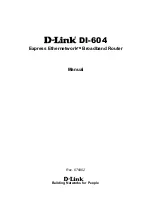
R250D&R250D-E
Product Description
4 Technical Specifications
Issue 01 (2016-07-05)
Huawei Proprietary and Confidential
Copyright © Huawei Technologies Co., Ltd.
19
Item
Description
Maximum
number of
VAPs for
each radio
16
Maximum
transmit
power
2.4 GHz: 21 dBm (combined power)
5 GHz: 20 dBm (combined power)
NOTE
The actual transmit power depends on local laws and regulations.
You can adjust the transmit power from the maximum transmit power to 1 dBm, with a
step of 1 dB.
Maximum
number of
non-overlap
ping
channels
2.4 GHz
802.11b/g
20 MHz: 3
802.11n
20 MHz: 3
40 MHz: 1
5 GHz
802.11a
−
20 MHz:
13
802.11n
−
20 MHz:
13
−
40 MHz:
6
802.11ac
−
20 MHz:
13
−
40 MHz:
6
−
80 MHz:
3
NOTE
The table uses the number of
non-overlapping channels supported by
China as an example. The number of
non-overlapping channels varies in
different countries. For details, see the
Country Codes & Channels Compliance
.
Channel rate
802.11b: 1, 2, 5.5, and 11 Mbit/s
802.11a/g: 6, 9, 12, 18, 24, 36, 48, and 54 Mbit/s
802.11n: 6.5 to 300 Mbit/s
802.11ac: 6.5 to 867 Mbit/s
Receiver
sensitivity
(Typical
values)
2.4 GHz
802.11b
-99 dBm @ 1
Mbit/s
-97 dBm @ 2
Mbit/s
-95 dBm @
5.5 Mbit/s
-92 dBm @
11 Mbit/s
2.4 GHz
802.11g
-94 dBm @ 6
Mbit/s
-93 dBm @ 9
Mbit/s
-90 dBm @
12 Mbit/s
-89 dBm @
18 Mbit/s
-85 dBm @
24 Mbit/s
-84 dBm @
2.4 GHz
802.11n (HT20)
-93 dBm @
MCS0
-89 dBm @
MCS1
-87 dBm @
MCS2
-85 dBm @
MCS3
-82 dBm @
MCS4
-78 dBm @
2.4 GHz
802.11n(HT40)
-91 dBm @
MCS0
-88 dBm @
MCS1
-85 dBm @
MCS2
-83 dBm @
MCS3
-80 dBm @
MCS4
-76 dBm @










































